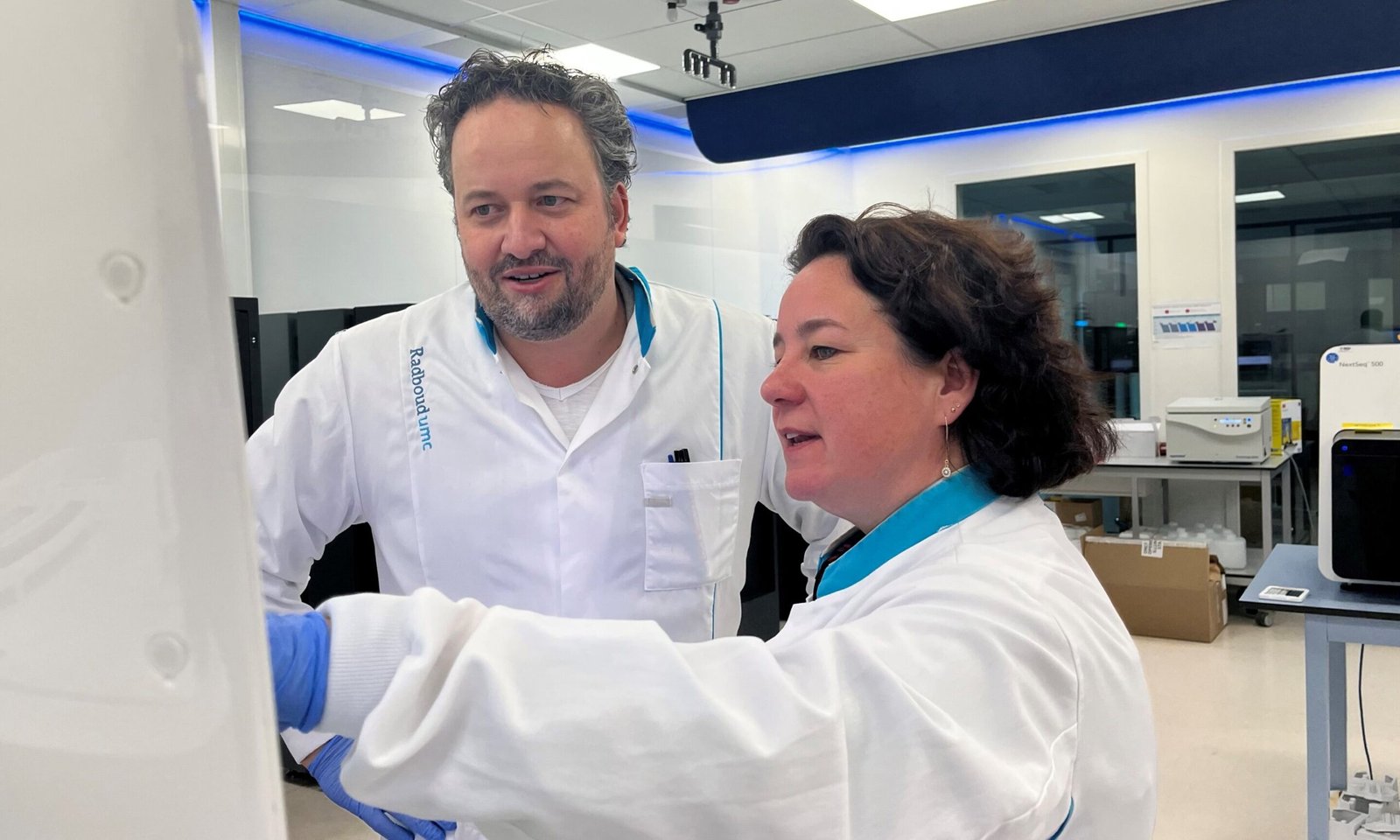The challenge of diagnosing rare diseases is one that has confounded the medical community for decades. Often, these conditions are so infrequent and complex that understanding their genetic origins and providing accurate diagnoses has proven to be incredibly difficult. However, a new phase in the battle against rare diseases has emerged with the success of Solve-RD (Solving the Unsolved Rare Diseases), a European consortium that has shown the significant power of international collaboration in tackling unmet medical needs in diagnosing rare conditions.
Recently, a milestone achievement was made by Solve-RD, with over 500 European patients receiving much-needed diagnoses through innovative genetic research. This milestone has been realized through the collaboration of 300 experts across 12 European countries and Canada, focusing on understanding the genetic basis of rare diseases and offering clarity to families dealing with these often elusive conditions. The affected patients span across several types of rare disorders, including neurological diseases, muscle diseases, intellectual disabilities, and even rare forms of hereditary gastrointestinal cancer.
The Value of International Collaboration in Rare Disease Diagnosis
The critical success of this international consortium exemplifies the importance of collaboration to address challenges that cannot be solved in isolation. Rare diseases, defined in the European Union as those affecting fewer than five out of 10,000 people, present a unique diagnostic conundrum for healthcare professionals. With over 7,000 rare diseases reported globally, it’s estimated that 70% of these conditions have a genetic origin. Given their rarity, genetic identification is often fraught with difficulty, particularly when conditions manifest across generations of the same family.
Many times, even when the disease is identified as hereditary, tracking down its genetic roots proves elusive. There can be a series of missteps or undefined variables that lead to a diagnosis remaining incomplete—sometimes for decades. The need for advanced diagnostic approaches and better data sharing is where Solve-RD has made a profound difference.
A Collaborative and Structured Approach: The Solve-RD Model
Under the guidance of several research institutions such as the University of Tübingen, Radboud University Medical Center, and the National Center for Genomic Analysis (CNAG) in Barcelona, Solve-RD conducted extensive research, which included reanalyzing genomic data from 6,447 patients alongside 3,197 unaffected family members. Through their collaborative efforts, the researchers were able to provide 506 diagnoses for patients who had long gone without answers, a result made possible by the reanalysis of stored genomic data.
This effort wasn’t purely about reexamining old datasets; it reflected the application of cutting-edge methodologies and the coordination across national and cultural boundaries to apply unified diagnostic approaches. According to Holm Graessner, the Solve-RD project coordinator, the success represents a “milestone for rare disease research in Europe.” The solution was a consequence of adhering to structured protocols for data interpretation, providing more detailed and reliable diagnoses.
In fact, for around 15% of these patients, the genetic diagnoses were not just informative—they provided actionable leads, including potential treatment paths. For some, it offered essential clarity on the nature of their illness, significantly impacting how they manage the condition, while others were assured that the genetic disorder causing their suffering had been correctly identified after many years of uncertainty.
Breaking Barriers: Overcoming Challenges in International Cooperation
While the success of this effort is remarkable, it was not without its challenges. One key obstacle to collaboration among various European countries was agreeing on a standardized methodology to analyze the vast swathes of data. Researchers from diverse disciplines—clinical genetics, computational biology, bioinformatics—needed to align their approaches to analyzing genomic variants. Determining which genes and variant types to consider, along with agreeing on ethical frameworks and processing methodologies, required intense discussion and planning.
Logistics, however, were another hurdle. Differing national legislations, variations in data protection regulations, and institutional differences across countries added a layer of complexity to the project. To ensure that these barriers did not hamper progress, the experts used a two-level framework that included not only genetic expertise but also clinical specialists from relevant fields, thus bolstering the accuracy and relevance of the diagnoses. This new approach has streamlined how diagnostic steps are now taken across Europe.
Moreover, the framework employed by Solve-RD highlighted the evolving nature of genetic research. New diagnostic approaches—such as long-read genome sequencing, optical genome mapping, and RNA sequencing—enabled scientists to analyze patients’ genomes with remarkable detail. These techniques not only broadened the scope of diseases identified but also paved the way for swifter identification and potential therapies.
The Role of the European Rare Disease Research Alliance (ERDERA)
The success of Solve-RD doesn’t end here. The next frontier of rare disease research is encapsulated within the creation of ERDERA (European Rare Disease Research Alliance), which builds upon the foundation laid by Solve-RD. ERDERA’s aim is to accelerate the diagnosis process even further. Its 180 member organizations, led by INSERM (the French National Institute of Health and Medical Research), seeks to revolutionize rare disease research through even larger collaborations. The goal is ambitious but promising—to reach 100,000 rare disease data sets and make over 1,000 diagnoses possible across Europe.
Particularly promising is how ERDERA is scaling efforts to include patients from more countries, opening up the diagnostic process and pooling expertise in the reanalysis of genomic data. Working through a broader network of medical centers, the aim is to offer personalized solutions to families who previously faced ambiguity or limited treatment options due to their rare disease diagnoses being unresolved.
From Discovery to Treatment: Hope for the Future
What remains paramount in this effort is how researchers hope to not only provide diagnoses but also discover effective treatments. The power of international cooperation cannot be understated. The unprecedented reanalysis of patient data from multiple countries has proven that by working together, medical and research teams can unlock hidden insights. This global solidarity means that rare disease patients are no longer limited by the borders of their respective nations.
The potential for these initiatives to benefit patients with rare neurological disorders, rare metabolic diseases, or hereditary cancer syndromes is transformative. By aligning expertise across borders, sharing data and research, and applying cutting-edge methods, the research community hopes to tackle conditions once deemed too obscure to comprehend.
Lisenka Vissers, a Professor of Translational Genomics at Radboud University, also a leading researcher in the study, mentioned how the initiative offered solutions to a patient suffering for 20 years with no clear diagnosis. She described how this reanalysis not only brought conclusions but also relieved families from years of uncertainty and frustration. Likewise, Alexander Hoischen, another lead researcher, emphasized that collaboration has become an essential model for the future. In his words: “This is a unique example of the power of cooperation—a huge step forward in European cooperation. But the journey has just begun.”
Conclusion
The impressive work done by Solve-RD has not only improved the lives of over 500 patients and their families but also sparked a broader momentum that holds hope for many more rare disease sufferers across Europe. It demonstrates that collaboration, cross-border data sharing, and advanced technology are the cornerstones for diagnosing previously undiagnosed patients, especially those suffering from genetic rare diseases.
As initiatives like ERDERA expand, patients from all over Europe and beyond could benefit from a more connected and unified system capable of providing clarity, actionability, and even potential treatments. For thousands of families affected by rare diseases, these advances mark the beginning of a new chapter filled with hope and scientific promise.
Reference: Genomic reanalysis of a pan-European rare-disease resource yields new diagnoses, Nature Medicine (2025). DOI: 10.1038/s41591-024-03420-w






